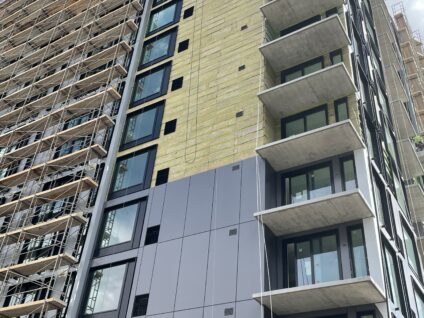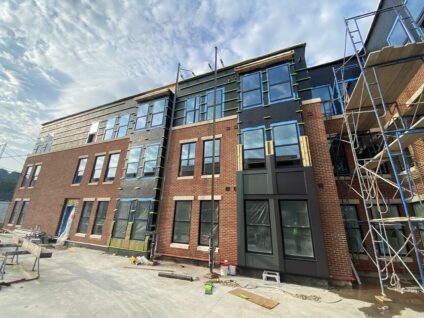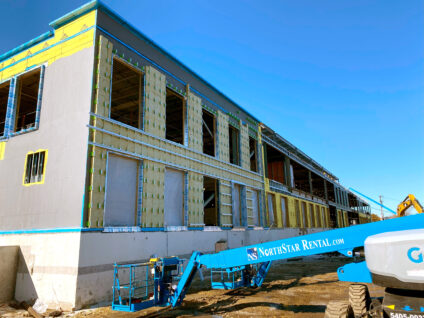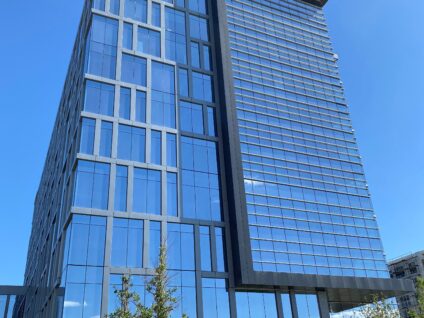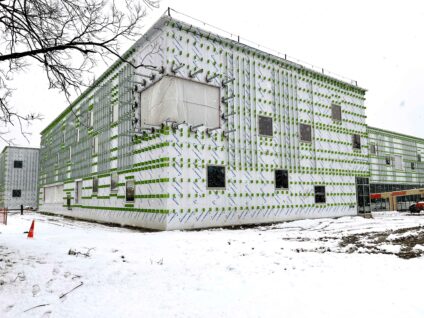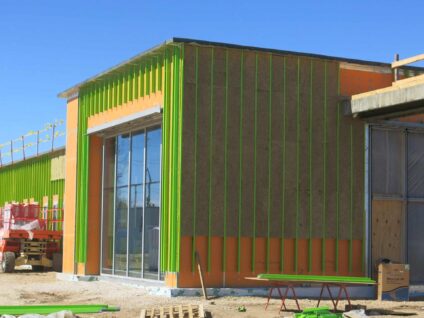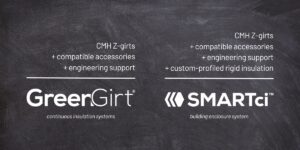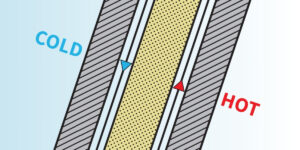“Badly installed insulation can be close to worthless.” – Passivhaus Trust [1]
Introduction
As the demand for energy-efficient buildings grows, architects, designers, and builders increasingly focus on high-performance wall assemblies. While the emphasis has been on using high-performing insulation materials and reducing thermal bridging, the issue of thermal bypasses has often been overlooked.
Thermal bypasses arise from discrepancies within the wall assembly – including gaps, cracks, and unintended air movement – fundamentally undermining the thermal integrity of building enclosures. These irregularities can precipitate significant thermal degradation, culminating in heat loss and a consequent rise in energy demands for heating and cooling. Research indicates that the heat loss attributable to thermal bypass can lead to an additional heat loss of up to 93% [2].
Image 1: Graph illustrating the four primary sources of thermal bypasses
Sources of Thermal Bypasses
Thermal bypasses can occur due to various factors, including:
- Design flaws: Design flaws are a significant source of thermal bypasses in building envelopes and can severely undermine the effectiveness of insulation. These flaws typically arise from inadequate or incorrect detailing of the building’s structural components, such as sub-framing sections and wall cavity geometries. When these elements are not precisely designed or executed, they can lead to the formation of gaps, cracks, and unintended air channels.
Video 2: Types of thermal bypass
These discrepancies allow air to circulate through or around the insulation layer rather than being effectively blocked. This unintended airflow not only reduces the insulation’s ability to maintain temperature but also compromises the overall energy efficiency of the building. Addressing these design flaws during the planning and design stages is crucial for ensuring a seamless and continuous insulation barrier that performs optimally.
Video 3: Air flow around insulation and through insulation
Video 4: Two examples of improper detailing of sub-framing sections and wall cavity geometries creating airflow gaps
- Material tolerances: Material tolerances play a significant role as a source of thermal bypasses in building enclosures. Variations in the dimensions of wall components due to manufacturing tolerances can result in gaps and cracks when these materials are assembled on-site, compromising the continuity of the insulation layer. Specifically, rigid foam insulation panels are prone to variations in width, length, thickness, and squareness due to production processes. [1] For instance, according to manufacturing specifications, generic rigid board insulation may differ in length by up to ½ inch, in width by ¼ inch, in squareness by ¼ inch, and in thickness by 3/8 inch. These discrepancies can lead to significant challenges during installation, requiring meticulous attention to detail to ensure that gaps are properly sealed.
If these variations are not adequately addressed, they can create air channels that undermine the effectiveness of the insulation, allowing heat to escape or enter, thereby reducing the overall thermal efficiency of the building. This makes it imperative for installers to carefully inspect and adapt their techniques to mitigate these inherent material inconsistencies.
Image 5: This example shows how joints between boards might look acceptable from above, yet there can be significant gaps that are not clearly visible and need to be filled.
- Installation issues: Installation issues are a critical factor contributing to thermal bypass problems in building assemblies. During the installation process, it’s essential that any gaps and cracks created by material variations or assembly methods are appropriately addressed. However, there can be a lack of diligent source material remediation by installers, who might not consistently recognize it is their responsibility to seal these imperfections. This oversight can occur for various reasons, including time constraints, lack of training, or insufficient attention to detail.
Image 6: Example of wall cavity with gaps between and behind the insulation boards resulting in more heat loss than anticipated in the design. [1]
- Skilled labor shortage: The shortage of skilled labor in the construction industry impacts the assembly of high-performance wall systems, contributing to potential thermal bypass issues. As demand for energy-efficient buildings increases, the need for trained installers who understand the complexities of modern insulation systems becomes crucial.
However, the prevailing labor shortage means that it is often challenging to find personnel with the necessary expertise and precision. This gap can lead to improper installation, where critical details such as sealing joints, fitting insulation correctly, and ensuring continuous coverage may be overlooked or inadequately executed.
The Importance of Addressing Thermal Bypasses
“For a given thickness of insulation, a 7.5 mm gap could result in a 203% increase in heat loss; a 15mm gap could be a 520% increase.” – L. Alter [4]
Failing to address thermal bypasses can lead to severe consequences for building owners and occupants. Thermal bypasses can occur due to design flaws, such as gaps and cracks allowing air to flow around, through, or behind insulation, material tolerances and installation issues, and a shortage of skilled labor. As a result of thermal bypasses, a wall assembly’s actual thermal performance – or effective R-value – can be drastically reduced, often delivering less than half of what is intended by design [3].
This reduction in thermal performance directly impacts energy consumption, leading to higher utility bills. Since the building cannot maintain temperature as efficiently, heating and cooling systems must work harder and operate longer to compensate for the lost heat in winter and the gained heat in summer. This increases costs and accelerates wear and tear on HVAC systems, potentially leading to earlier-than-expected failures and replacements.
Moreover, the comfort of occupants is compromised. Inconsistent temperatures, drafts, and cold spots can become prevalent throughout the building, affecting the liability and satisfaction of its users. Additionally, the diminished effectiveness of insulation exacerbates environmental impacts by increasing the carbon footprint associated with excessive energy use.
Ultimately, ignoring thermal bypass issues undermines the overall sustainability of the building. For architects and builders, ensuring that insulation is correctly installed and fully functional is crucial for meeting building standards and regulations and upholding a commitment to energy efficiency and environmental stewardship.
Image 7: 2″ GreenGirt CMH Z-Girts that eliminate thermal bypass with custom-profiled insulation
Conclusion
Thermal bypasses are a critical issue in building enclosures that can significantly undermine the thermal performance of wall assemblies. By understanding the sources of thermal bypasses – such as design flaws, material tolerances, installation errors, and a shortage of skilled labor – designers, builders, and building owners can effectively tackle these challenges to deliver high-performance, energy-efficient buildings.
Investing in comprehensive solutions that address these various challenges is essential to ensuring that building owners and occupants benefit from the full potential of a well-designed and properly executed building enclosure. This commitment not only enhances the sustainability of the building but also ensures long-term savings and improved conditions for occupants.
Optimum Solution: SMARTci® Building Enclosure System
Adopting a comprehensive approach that tackles design flaws, material tolerances, installation and labor challenges is essential to mitigate thermal bypasses effectively. The SMARTci building enclosure system offers a high-performance, easy-to-install solution that addresses all four common sources of thermal bypasses.
This system includes factory custom-profiled insulation panels and composite interface components with a tolerance of 0.005 inches, ensuring a precise fit and the elimination of gaps. Each insulation panel in the SMARTci system forms compression seals on all four sides, with at least three compression seals provided by the structural interfaces on each of the four sides. This precision engineering and robust sealing method eliminates any gaps within the system, preventing air circulation and thermal bypasses without the need for tape or caulk.
Furthermore, the SMARTci system is designed for ease of installation, significantly reducing the potential for workmanship-related issues that can lead to thermal bypasses. The precise tolerances and simplified installation process minimize the risk of component size variations and installation errors, ensuring the system is inherently air- and water-tight once installed. Notably, the SMARTci system can be installed 2-4 times faster than traditional or competitive continuous insulation systems, making it an efficient yet reliable solution.
By addressing all four critical areas – design, material tolerances, installation, and labor skill level – the SMARTci® system provides a comprehensive and effective solution to prevent thermal bypasses in building enclosures.
To learn more about the SMARTci® building enclosure system, please visit GreenGirt.com.
References:
[1] Passivhaus Trust. (2017). Passivhaus Insulation: Good practice guide to achieving insulation continuity.
[2] Trethowen, H. A. (1991). Sensitivity of insulated wall and ceiling cavities to workmanship. Journal of Thermal Insulation, 15(2), 172-179.
[3] Lecompte, J. (1990). The influence of natural convection on the thermal quality of insulated cavity construction. Building Research and Practice, 6(6), 349-354.
[4] Alter, L. (2022, October 7). Thermal bypass is another thing for builders to worry about. Treehugger Voices. https://www.treehugger.com/thermal-bypass-builders-5194768
© 2024 Advanced Architectural Products

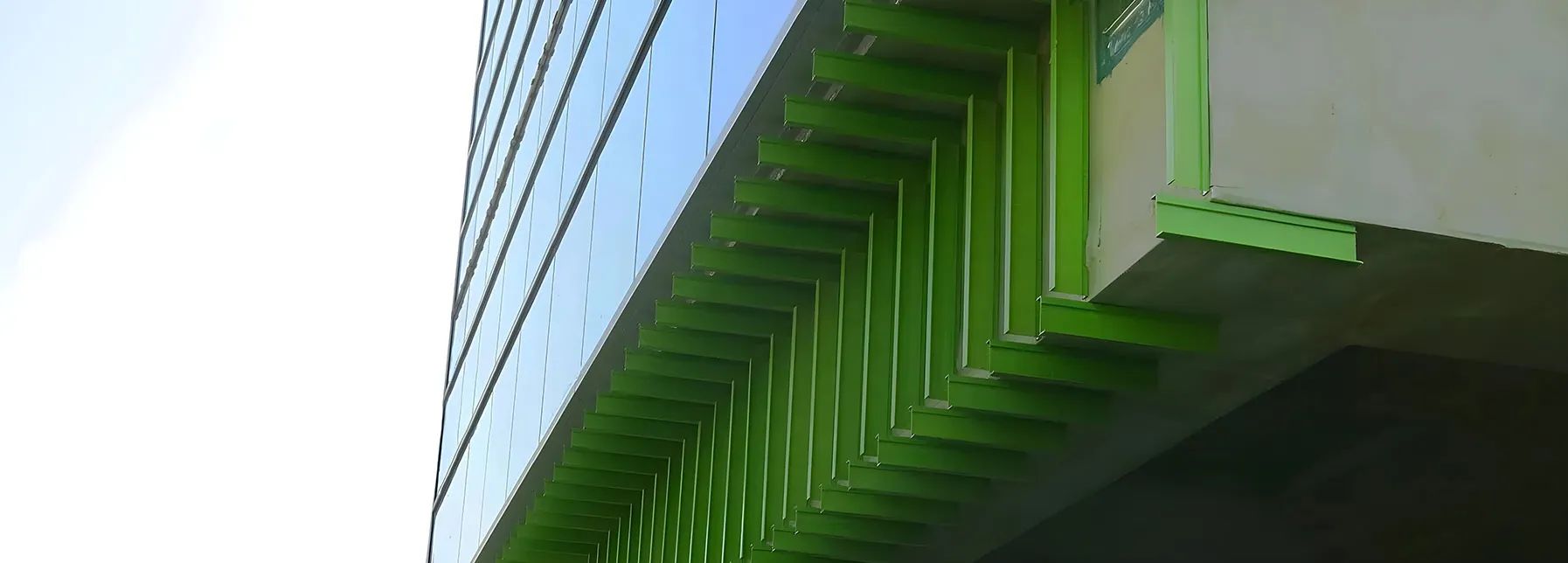


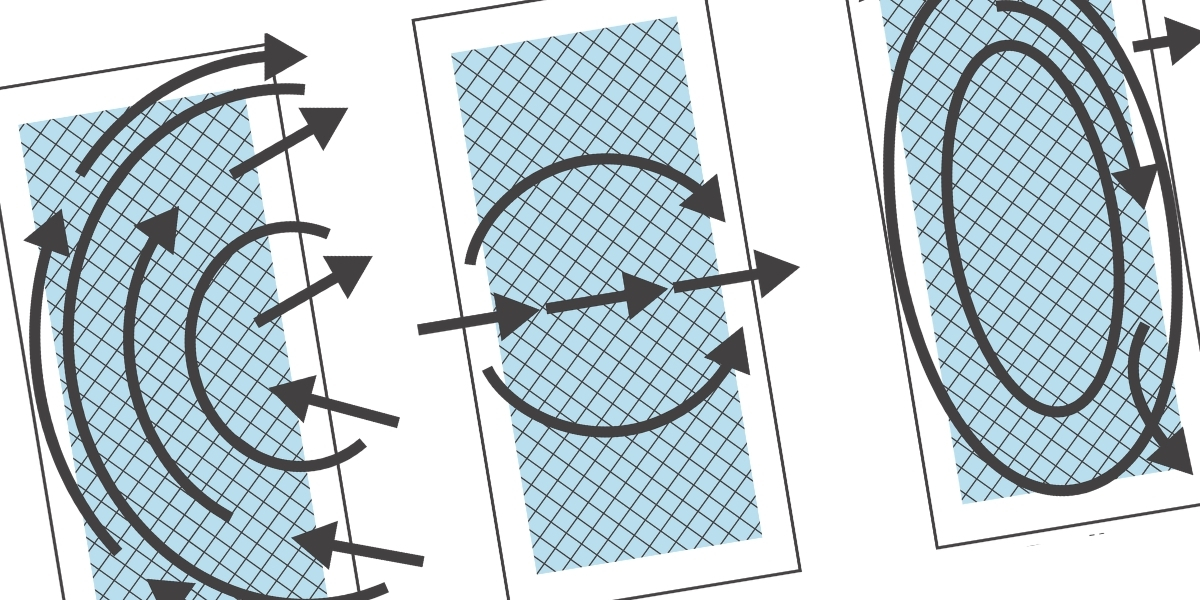
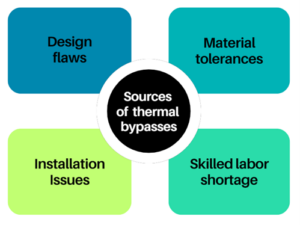

![Image 6: Example of wall cavity with gaps between and behind the insulation boards resulting in more heat loss than anticipated in the design. [1]](https://greengirt.com/wp-content/uploads/2024/05/Picture1-244x300.png)

